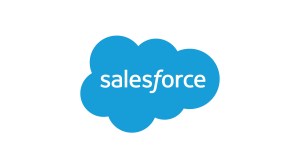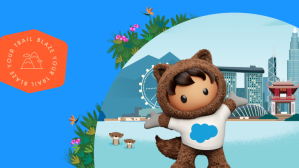How To Build A Productive Lead Generation Strategy That Works



These three tips will help you reach quality leads that have a higher chance of becoming customers.

Salesforce
Our goal as marketers is to attract people to our brand. But not just any people: we want to draw prospects with a high likelihood of becoming customers. Good lead-generation tactics can help.
We define lead generation as the process of creating consumer interest for a service or product, with the end goal of turning that interest into revenue.
Leads can be generated when a consumer downloads a piece of content, signs up for a free trial, or creates an account for a free product. They come from organic channels, such as Google search, and paid channels, such as advertising campaigns.
Generating mass appeal is good for brand awareness, but here’s the thing: not all leads are created equal. Running a strong lead-generation program is not about the quantity of leads we generate. It’s about ensuring quality leads by targeting the right people, at the right time, and delivering the right content on the right channel to them in their customer journey.
Want to learn more about building a productive lead generation strategy? Here are three tips to grow more leads, using examples from how we do things here at Salesforce.
1. How to measure lead generation tactics
An important metric is a key indicator of business growth and can be tied to the increase in product engagement and revenue. It’s something the entire organisation can rally behind.
Our marketing team key metric is when an opportunity reaches the second stage of the sales funnel. At that point, our sales development team has vetted a prospect, and the prospect is verified and accepted by an account executive.
Our sales team will estimate the potential revenue from the opportunity, allowing the marketing team to also begin tracking a return on investment. From here, we start to build our measurement framework. We use this metric to measure the success of our lead generation tactics and improve programs.
When measuring, it’s important to gauge which sources are bringing in high-quality leads. Are they social platforms like LinkedIn, email newsletters, or ad partners like Google? Also, make sure the money spent on ads is generating high-quality users.
An example of a high-quality lead is a ‘hand raiser’ — someone who engages with the brand or asks for information (like requesting a demo or free trial). A passive lead is someone who provides contact info to download an ebook but hasn’t expressed other interest. We pay close attention to hand-raiser leads because they have a higher chance of becoming customers.
We focus on content performance from the highest-quality sources of leads. If traffic is dropping from a top-quality lead source, we react quickly because of the expected downstream effect. Possible tweaks include changing our ad design or ad copy, adjusting our paid investment or updating a call to action (CTA).

2. Develop strategies to get the right leads
There is a saying that goes ‘a lead is a lead,’ but that’s a big misconception.
Customer insight and interest is valuable, and social platforms like Facebook and LinkedIn generate revenue by offering targeted advertising that uses the customer data they’ve collected. So, a more targeted campaign on LinkedIn will cost significantly more than a general banner ad.
Some leads can be less costly and have huge scale, but are low quality because they aren’t reaching people who are looking for specific products or services (and therefore less likely to convert).
Other leads are more expensive but target people who are ready to buy. And then there is everyone in between.
The various channels, targeting options, and content that we pair together to acquire leads can produce hundreds or even thousands of iterations. We have to recognise the lead generation tactics that produce quality leads and at what cost.
For example, on LinkedIn, our target is sales managers within the financial services industry who have interacted with our business once in the past. We serve them a customer story from a banking customer. These leads might be more expensive, but they’re highly likely to convert, so the cost is worth it.
3. How to test lead generation tactics
Improving the efficiency of lead generation tactics is crucial — no matter if it is a one-person team at a startup or a larger team at an enterprise.
At Salesforce, we improve lead quality and ROI by using Marketing Cloud Intelligence to run tests on our paid ads. We run a test by delivering two or more versions of ad copy or form pages to different segments of our audience at the same time and seeing which ones perform best.
These tests are done on our highest-trafficked content. We’ve found that even the most basic changes have driven significant returns — and then we can apply those changes to other programs to make them more efficient as well.
For example, we ran a simple test changing the layout of the several fields in a form that readers filled out to access a piece of content. It was simple — just shortening the vertical length of the form. This change increased form submission on desktop computers by 10%. We now do this on all our forms.
Again, not all tests require massive change of content. What matters the most is when we do find wins, they are used across many of our programs.
Building the right lead-generation tactics takes some work. But when it is done efficiently, these tactics will save cost and time, and bring in new revenue.
Building relationships with your customers is vital for your business growth. Learn how to get the most out of your leads and take your business from good to great from this guide.
This post originally appeared on the U.S.-version of the Salesforce blog.




















